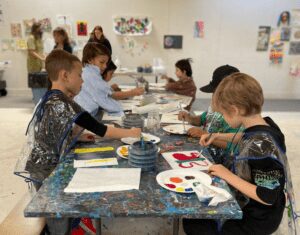Focused on our youngest visitors, ages 3-10, Playthings of the Past features toys, dolls, and other kinds of material culture of childhood from the Lyman Allyn’s permanent collection. The core collection grew out of a substantial gift in the 1960s from toy collector Lydia Baratz, who had assembled an impressive collection over a period of 40 years. Many pieces in the Baratz Collection and in subsequent donations are European or American dolls and toys from the 19th and early 20th century.
Why does play matter and how does it shape us, especially as children? Through play, children experiment with the world and begin to understand their place in it.
Play, whether with toys, games or one’s imagination, is universal. With an area for hands-on play with sensory materials, books, games and dolls, this gallery encourages children to touch, learn, and explore through play.




Victorian Dollhouse
Built for the Lyman Allyn Art Museum in 1962 by Harold E. Hawthorne, former president of Hawthorne Woodworking in Oakdale, the American Victorian Dollhouse was designed to house dolls and doll furniture donated by Lydia Baratz. The exterior of the dollhouse was designed to reflect the Victorian tastes of its doll inhabitants, with a shingle mansard roof, dormer windows, and a widow’s walk encircling two chimneys. While the house is decorated in the style of 1850, the furnishings span the Victorian era into the early 20th century. The three floors of the home’s interior include bedrooms, a dining room, a nursery, a sewing room, and two kitchens, showcasing the many wonderful miniatures of the Baratz Collection.








